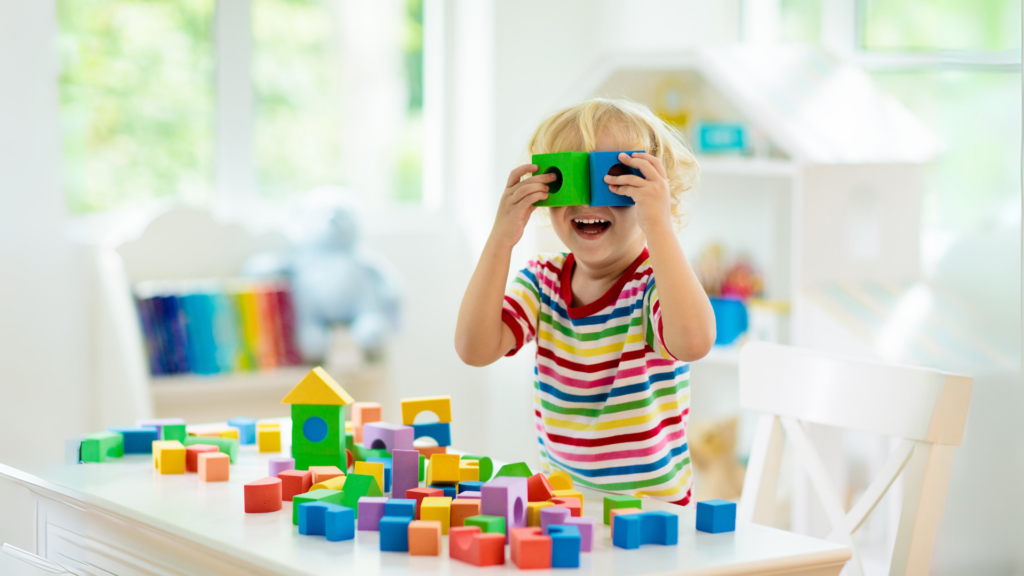
Intellicast S6E22 — A Sneak Peek at the IA NCC Fall Conference
August 29, 2023
Intellicast S6E23– News Stories to Kick-Off September
September 6, 2023How Safe Is It to Perform In-Home Product Testing?
In-home product testing, also known as in-home usage testing, has emerged as a powerful tool for companies seeking genuine insights into consumer preferences and behaviors about their product.
This research methodology involves participants using products within the comfort of their own homes, providing a unique perspective that goes beyond traditional testing environments.
While in-home product testing offers significant benefits, concerns about safety often arise for both participants and companies. We will delve into the safety aspects of in-home product testing, highlighting how responsible market research companies address potential risks and ensure a secure testing experience.
Understanding the Fundamentals of In-Home Product Testing
At its core, in-home product testing involves participants incorporating products into their daily lives to gauge usability, satisfaction, and performance. By experiencing products in a natural setting, participants can offer invaluable feedback that reflects real-world usage.
As this approach is used to gather insights, questions about the safety of the products being tested and the methods employed to mitigate risks can arise.

Elements of In-Home Product Testing
In-home product testing encompasses more than just using a product at home. It’s a structured process that requires careful planning, participant selection, and comprehensive safety measures.
Understanding the components that constitute in-home product testing is crucial to grasping how market research companies prioritize participant well-being and data integrity. The key elements of in-home product testing include:
Planning and Preparation
In-home product testing starts with meticulous planning. Market research companies collaborate with brands to define the objectives, scope, and target audience for the testing. Clear goals help shape the testing process and ensure meaningful results.
 Participant Selection
Participant Selection
Careful participant selection is paramount to the success of in-home product testing. Companies identify participants who represent the intended user demographic and are sourced from online sample panels, customer lists, and other areas.
Demographic factors such as age, gender, location, behavioral and attitudinal factors, and lifestyle are taken into account to ensure relevant insights.
Product Distribution
Once participants are selected, products are sent to their homes. This phase involves coordinating logistics and packaging, and ensuring that participants receive the necessary instructions for using the product effectively.
Usage Instructions
Participants are provided clear and concise usage instructions to ensure they understand how to use the product safely and correctly. This step is crucial to prevent misuse and gather accurate feedback.
Interaction and Feedback Collection
Participants engage with the product as they go about their daily lives. They provide feedback on various aspects such as usability, functionality, design, and overall satisfaction. Feedback collection methods can include surveys, diaries, interviews, and video calls.
![]() Data Analysis
Data Analysis
The feedback collected from participants undergoes thorough analysis to extract meaningful insights. Patterns, trends, and qualitative feedback are examined to draw conclusions about the product’s performance and reception.
Participant Recontact
Sometimes participants need to be contacted after they have provided their initial feedback. This could be to ask additional questions, request clarifications on some feedback, validate users, etc.
Privacy and Data Protection
Participant data privacy is a top priority. Market research companies adhere to stringent data protection regulations and ensure that participants’ personal information and feedback are kept confidential.
Types of In-Home Product Testing
There are various types of in-home product testing, including:
Consumer Packaged Goods (CPG)
Food and beverages, household cleaning products, personal care items (shampoos, soaps, lotions), and pet care products often undergo in-home product testing to assess taste, usability, effectiveness, and overall satisfaction.
Electronics and Technology
Gadgets like smartphones, laptops, smart home devices, and wearable technology can be evaluated for user-friendliness, performance, and compatibility within users’ daily routines.


Home Appliances
Products like kitchen appliances, vacuum cleaners, air purifiers, and washing machines can be tested in-home to gauge functionality, ease of use, and impact on daily chores.
Beauty and Skincare
Cosmetics, skincare products, hair styling tools, and fragrances are commonly tested through in-home product testing to assess effectiveness, user experience, and visual appeal.
Home Furnishings
Furniture, bedding, home decor, and lighting can be evaluated using in-home testing to understand comfort, aesthetics, and suitability for different living spaces.
Children’s Products
Toys, baby care items, clothing, and educational tools often undergo in-home testing to determine safety, durability, entertainment value, and developmental impact.


Health and Wellness
Fitness equipment, dietary supplements, wellness products, and medical devices can be assessed to understand user experiences, results, and overall satisfaction.
Automotive Accessories
In-home testing can be employed to evaluate car accessories such as seat covers, car cleaning products, air fresheners, and infotainment systems.
Clothing and Apparel
In-home testing can be used to assess the fit, comfort, durability, and style appeal of clothing, footwear, and accessories.
Outdoor and Recreation
Products like camping gear, sporting equipment, outdoor apparel, and gardening tools can be tested to gauge performance, durability, and user satisfaction.


Household Essentials
In-home testing can be used for everyday items like paper products (tissues, toilet paper), cleaning tools (mops, brooms), and storage solutions.
Entertainment and Media
In-home testing is a great option to assess media consumption experiences, such as video streaming services, books, magazines, and gaming consoles.
Evaluating Safety Aspects of In-Home Product Testing
Ensuring the safety of participants and the integrity of data is paramount in in-home product testing. While there can be risks involved, companies are putting a great deal of time and effort toward upholding the highest standards of safety throughout the testing process.
Risks Involved in Home Product Testing
In-home product testing can introduce risks that market research companies must diligently address to ensure the well-being of participants and the accuracy of results.
The following are some of the risks associated with in-home product testing:
Health and Safety Risks
Some products could contain allergens, irritants, or potentially harmful ingredients. Participants could experience adverse reactions, especially if they have allergies or sensitivities.
Market research companies must thoroughly assess product ingredients and provide clear instructions and guidance about ingredients to mitigate health risks.
Product Malfunction
Products that are defective or malfunctioning could lead to accidents, injuries, or property damage.
Ensuring that the products are in proper working condition before distribution is essential to prevent any harm to participants or their home.
Incorrect Usage
Participants might use the product incorrectly, leading to undesirable outcomes.
Companies need to provide detailed usage instructions and educate participants on proper handling to minimize the risk of misuse.
Data Privacy
In-home testing often involves participants sharing feedback and insights.
Protecting participants’ privacy and data security is vital to avoid any breaches, ensure compliance with government regulations, or any unauthorized access to personal information.
Environmental Impact
Certain products might have an environmental impact when used or disposed of incorrectly.
Companies should emphasize proper disposal methods and environmentally conscious practices to participants.
Ways Companies Ensure Product Safety for In-Home Testing
Prioritizing participant safety is a core concern for market research companies. This is accomplished through product selection and rigorous screening processes.
Products are thoroughly vetted for potential hazards, ensuring that they comply with safety standards and regulations.
Product Screening and Evaluation
Market research companies and brands carefully assess the products that are to be tested. This includes a thorough examination of ingredients, materials, potential allergens, and any associated risks. Only products that meet stringent safety criteria and comply with relevant regulations are selected for testing.
Compliance with Regulations
Products that are to be tested must adhere to industry-specific regulations and safety standards. This includes evaluating whether the product has received necessary certifications, such as safety certifications for electronics or approvals from relevant health authorities.
Clear Usage Instructions
Market research firms provide participants with thorough and easy-to-understand usage instructions covering proper setup, operation, maintenance, and any precautions to take. Clear guidelines help participants use the product correctly, minimizing the risk of accidents or misuse.
Educational Materials
Educating participants about the product’s features, potential risks, and proper usage is a crucial step in ensuring safety. Companies may provide informational materials, videos, or online resources to equip participants with the knowledge they need to interact with the product safely.
Recall Procedures
Market research firms and brands need to have a mechanism in place for recalling products if safety concerns arise post-distribution. This includes contacting participants and providing instructions on what to do with the product.

Ethical Considerations
Market research companies operate under ethical guidelines that prioritize participant well-being. In-home testing protocols should be designed with ethical considerations in mind, emphasizing transparency, informed consent, and participant
In-Home Product Testing: Balancing Risk and Reward
While there can be some risks in product testing, they can be minimized with proper precautions and industry best practices. The benefits of in-home testing, including valuable insights and real-world feedback, outweigh any potential risks.
Best Practices for Minimizing Risks in Home Product Testing
Stringent Product Selection
Market research companies and brands choose products that are safe for participants to use in their homes.
Participant Screening
Participants should be carefully sourced from online sample panels, customer lists, and other areas. They should be selected based on demographic, behavioral, and attitudinal factors, and lifestyle to ensure the right fit for the product being tested.


Clear Usage Instructions
Participants should be sent detailed instructions on proper product usage to prevent accidents.
Ethical Practices
Industry-established ethical guidelines are followed to protect participants’ rights and privacy.
Effective Communication
Transparent communication between participants and researchers fosters trust and ensures concerns are addressed.
Conclusion
In-home product testing, when conducted with safety measures in place, offers a valuable opportunity for both companies and participants. Participants can confidently engage with products and companies can make informed decisions based on real-world insights.
Ultimately, the safety of participants is paramount in in-home product testing, and responsible market research companies prioritize this aspect throughout the testing process.



